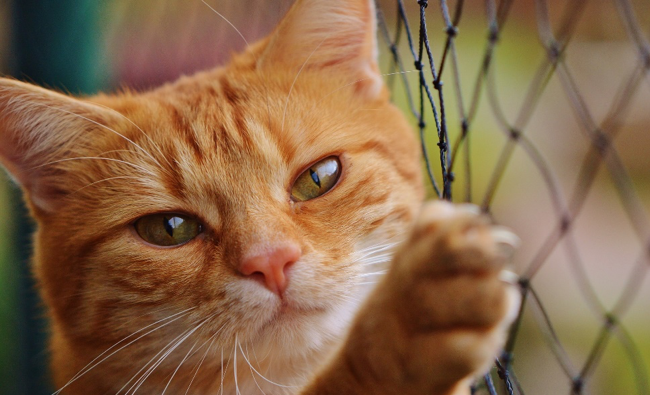If You Love Animals, Keep Your Cat Indoors
Call it cat-rovercial, but if you’re a cat owner keeping them indoors is the best way to show them you love them. Compared to indoor cats, outdoor cats only have an average lifespan of five years, while indoor cats can live to see their 20th birthdays!
Free-roaming outdoor cats are more likely to be…
- Hit by cars
- Killed by chemicals or poison
- Picked up by animal control
- Harmed by diseases/infections/parasites from other animals
- Become lost or trapped
- Abused by people
- Get frostbite
- Be eaten by coyotes, hawks, or foxes
- Hurt or killed in fights with other cats or wild animals
Imagine your beloved cat not coming home, or coming home with life-threatening injuries or diseases. This is the sad reality for too many pet owners. Even the Canadian Veterinary Medical Association has taken an official position against free-roaming.
Cat safety is only one of the reasons why Nature Canada is calling on municipalities to limit free-roaming cats.
Doing so will do more than just keep fluffy safe. Keeping cats indoors reduces cat overpopulation, protects public health, and saves bird lives.

Yup—that’s right. Keeping cats indoors will benefit both our feline friends and our feathered friends. If you’ve had a dead bird ‘gifted’ to you by your pet cat, you’ll understand why. Every year in Canada, free-roaming and feral cats are estimated to kill somewhere between 100 and 350 million birds, not to mention that they leave orphaned baby birds behind.
This is especially bad news considering so many Canadian bird species are already Species at Risk. Between the years of 2001 and 2014, the number of bird species listed as At Risk increased from 47 to 86 between 2001 and 2014. Climate change, habitat destruction, and human activity are all devastating bird populations.
Birds are up against so much. Let’s not add cats to the ever-growing list of threats to our feathered friends.
In Toronto, big things are happening around the indoor/outdoor cat debate. Proposed changes to the Toronto Animal Protection Bylaw #349 that would have prohibited letting cats roam free in the city were shot down by city council. This will only make things worse for Toronto’s birds (not to mention cats, people, and other wildlife).

In 2011, Toronto Animal Services picked up more than 1,300 dead cats from the streets of the city—coming in second only to racoons and squirrels. Toronto is one of Canada’s leading and largest cities, and it needs to do better at protecting birds and other biodiversity. The City of Toronto was one of the very first to pass Bird Friendly Building Design Guidelines, why not go the extra mile to protect their feline and feathered friends?
If you love animals, cats and birds alike, do not let your cat roam free amidst the many dangers the outside world offers. There are still plenty of ways for your pet to enjoy time outside, such as through outdoor enclosures, harnesses and leashes, pet strollers, and even pet backpacks!
If you’re curious as to how you can help to advocate in your municipality to help keep cats safe and save bird lives, check out our Municipal Brief for Cat and Bird Conservation. Already have an outdoor cat who may be resistant to indoor training? Nature Canada has you covered with our Retraining Guide.
Across the globe, we are seeing staggering biodiversity loss. Birds are suffering. Isn’t it worth it to keep your cat safe indoors to help do your part to lessen unprecedented extinctions?



